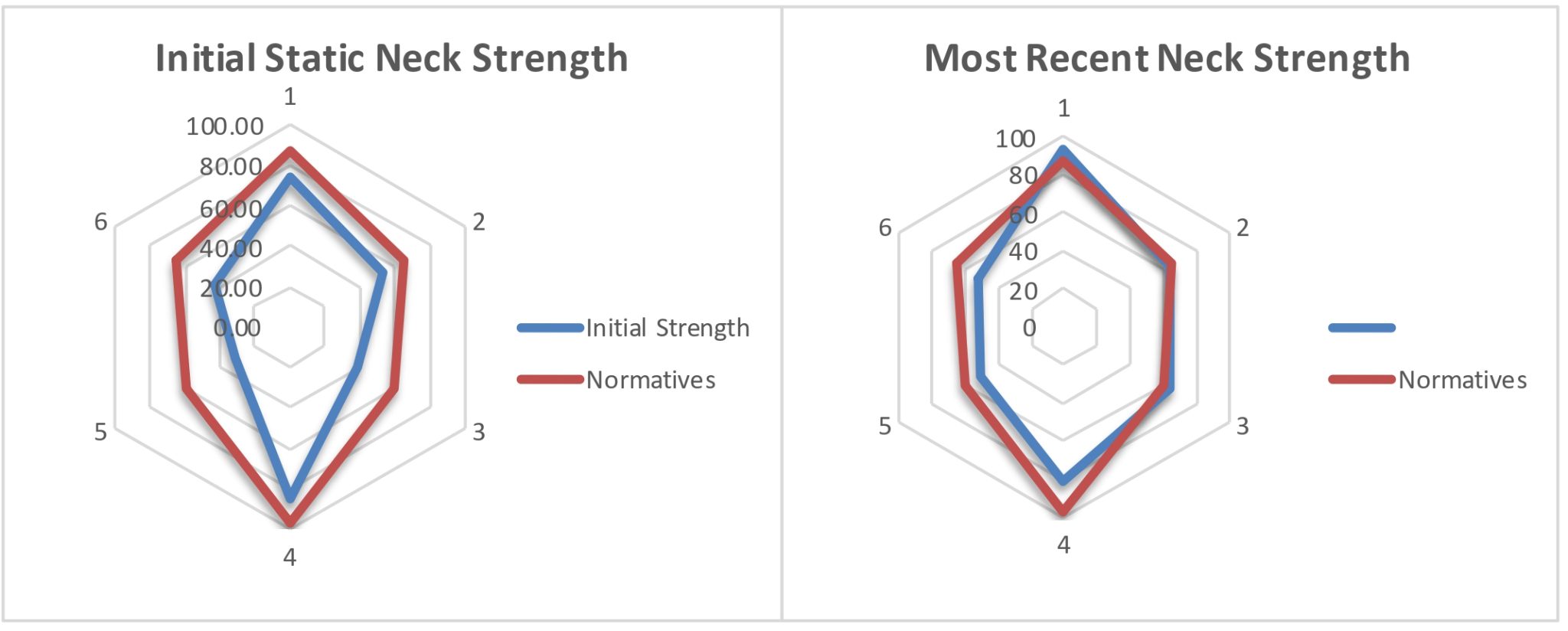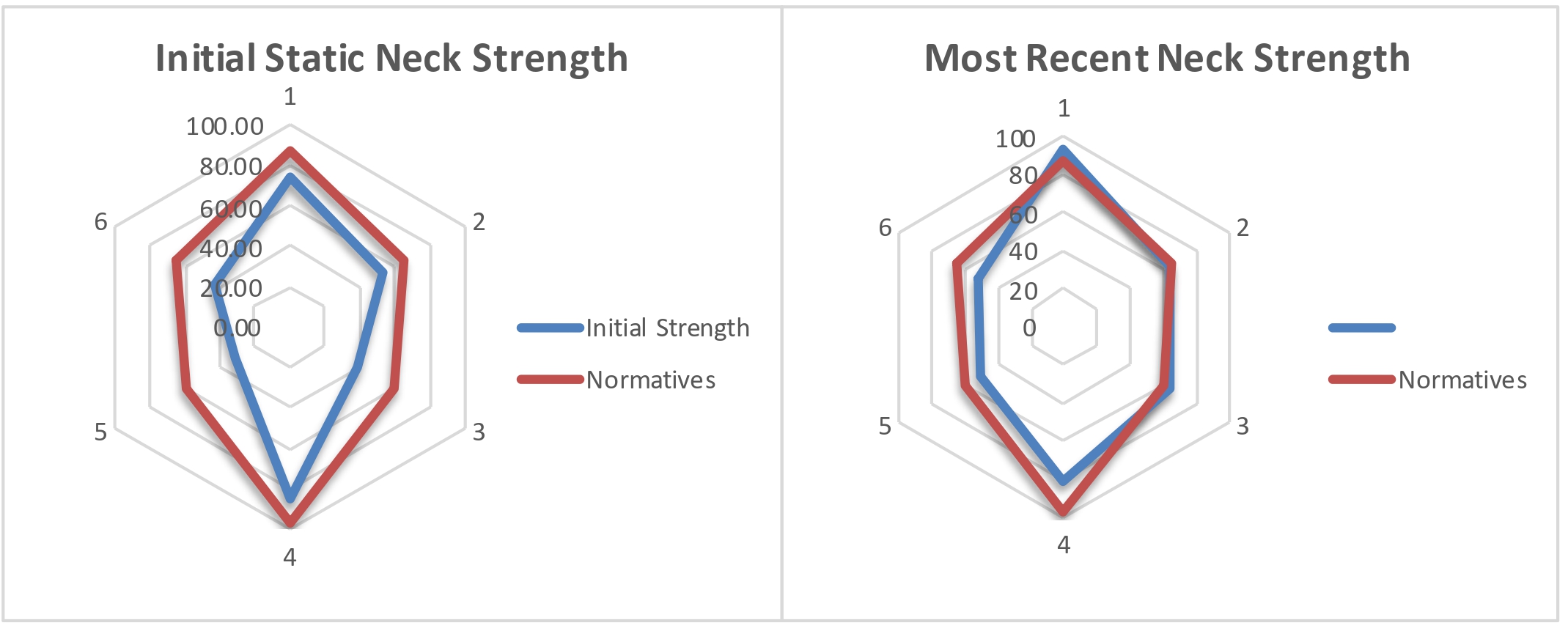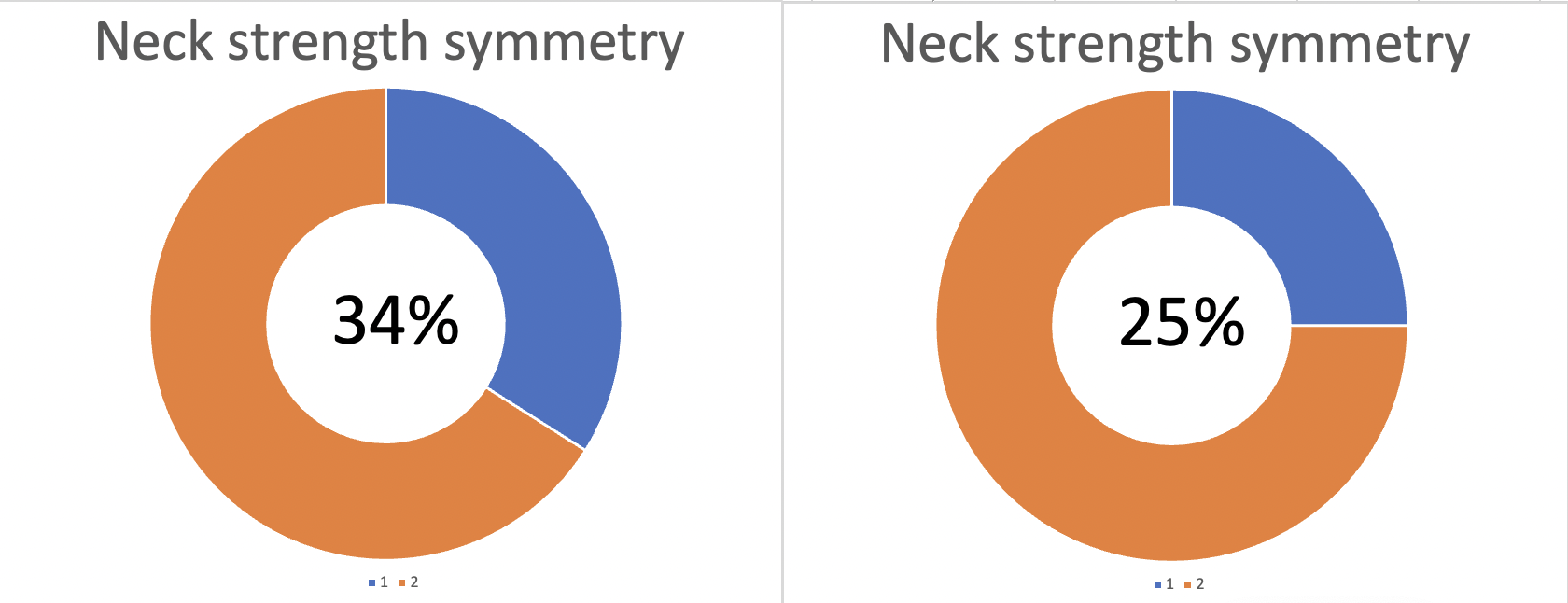Improving Neck Symmetry: The Balanced Approach To Concussion Prevention

Improving Neck Symmetry: The Balanced Approach to Concussion Prevention
When we talk about concussion prevention, much of the conversation revolves around protective gear, rules of the game, and awareness. However, a critical and often overlooked component is the structural integrity and strength symmetry of our neck muscles. In my previous post, I discussed the importance of multi-planar neck training. Since the neck moves the head in all three planes of motion, you must strengthen the neck in all three planes of motion. Today, we’re delving into the principle of improving neck strength symmetry and how this is of paramount importance in concussion prevention.
Why Neck Symmetry Matters for Concussion Prevention:
- Balanced Force Distribution Front to Back: In the neck, the extensor muscles tend to be stronger than the flexor muscles. However, research has shown that the larger this discrepancy the more acceleration the head experiences to impulse loads that may then lead to an increased risk of concussion. This is very similar to the knee where the extensors (quads) are also stronger than the flexors (hamstrings) and it is well established that the greater discrepancy between these extensors and flexors (quads to hamstring ratio) also leads to an increased risk of knee injury. Hence it is important to be sure to improve the flexor to extensor ratio in the neck as you train the neck muscles.
- Balanced Force Distribution Side to Side: Again, looking at the knee for comparison, it is well established that strength discrepancies between the left and right side lead to an increased risk of injury. Likewise, for the neck, left side flexion strength should be equal to right side strength and left rotation strength should be equal to right side rotation strength to further help stabilize the head against sudden impulse loads.
- Reduced Muscle Fatigue: Muscular imbalances in the neck can result in certain muscle groups overcompensating for weaker ones. This can lead to quicker fatigue, poorer motor control and a heightened vulnerability to concussions as fatigued muscles are less capable of producing fast and coordinated stabilizing force.
- Enhanced Functional Performance: Perhaps the most common form of neck muscle asymmetry is forward head posture. This condition is also associated with a decrease in sensorimotor function as well as physical skill acquisition. Since a symmetrical neck supports better overall posture and alignment, this becomes crucial in both daily activities and sports performance. This ensures not only a greater efficiency of movement but also optimal neck positioning during potential impacts, thereby safeguarding against concussions.
How to Measure Neck Strength Symmetry
There are several ways to measure neck strength, but very few of them address neck strength symmetry. The easiest metric to assess is the neck flexor-to-extensor ratio. Depending on the neck strength protocol (i.e. fixed frame dynamometry, handheld dynamometers, therapist vs fixed vs client generated force, etc.) you use will provide slightly different ratios, so be sure to look at normative values for the measurement protocol you use. If they don’t provide one, simply divide the average flexor strength by the average extensor strength. When assessing your athlete, see where they are in comparison to this metric. If you want to get a more detailed evaluation of their neck strength symmetry, this requires a little more statistical analysis (and a measurement across all planes of neck movement – including rotation). First, calculate the standard deviation of the multi-planar neck strength scores (for instance, in Excel: =STDEV(flexion, extension, right side flexion, left side flexion, right rotation, left rotation). Then you take this value and divide it by the average of the six strength scores i.e. (flexion + extension + right side flexion + left side flexion + right rotation + left rotation)/6. This will provide you with a percentage of variability across the six independent strength directions of movement. Normative values that I use are an average of 26% for males (range 21% – 30%) and 28% for females (range 24% – 32%). Interesting to note, that generally a greater neck strength symmetry score than normal is obviously a concern, but so is potentially a very low score. This is because, someone who has very symmetrical neck strength (without training) tends to be someone who is not comfortable generating their maximum amount of force in any direction, so they tend to cap their efforts at the same level for each direction. I tend to see this in chronic neck pain/ chronic concussion clients.
Harnessing TopSpin360 for Balanced Neck Strength and Symmetry
The quest for a symmetrical neck strength profile finds its ally in the TopSpin360 dynamic multi-planar neuromuscular training device. Its design promotes uniform training across all planes of motion of the neck, eliminating dominance and weakness. The device’s mechanism of using centripetal force ensures that resistance and engagement are consistent, aiding in cultivating a balanced neck strength, which is pivotal for optimal force distribution and concussion prevention. Athletes using the TopSpin360 have shown significant improvements in neck muscle symmetry, and, as a result, a more robust defense against concussive forces.
Follow us
Related Post
The realm of concussion prevention is vast, often focusing on tangible elements …
In the journey of understanding the neck’s role in concussion …
When we talk about concussion prevention, much of the conversation …



